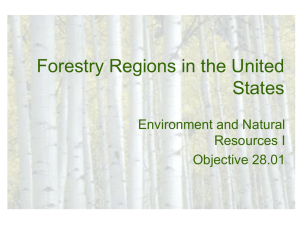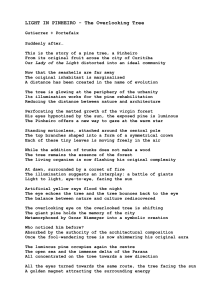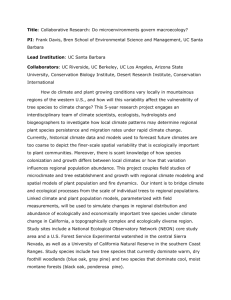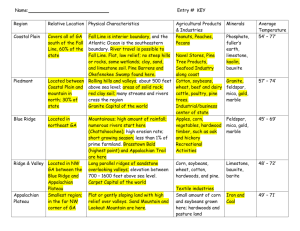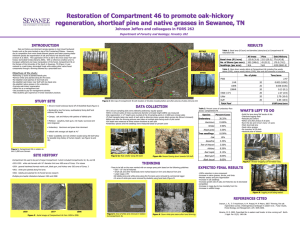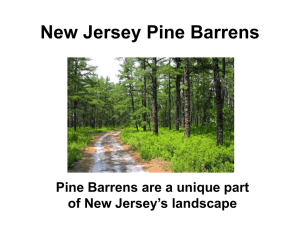The most current edition of each of the following references will be
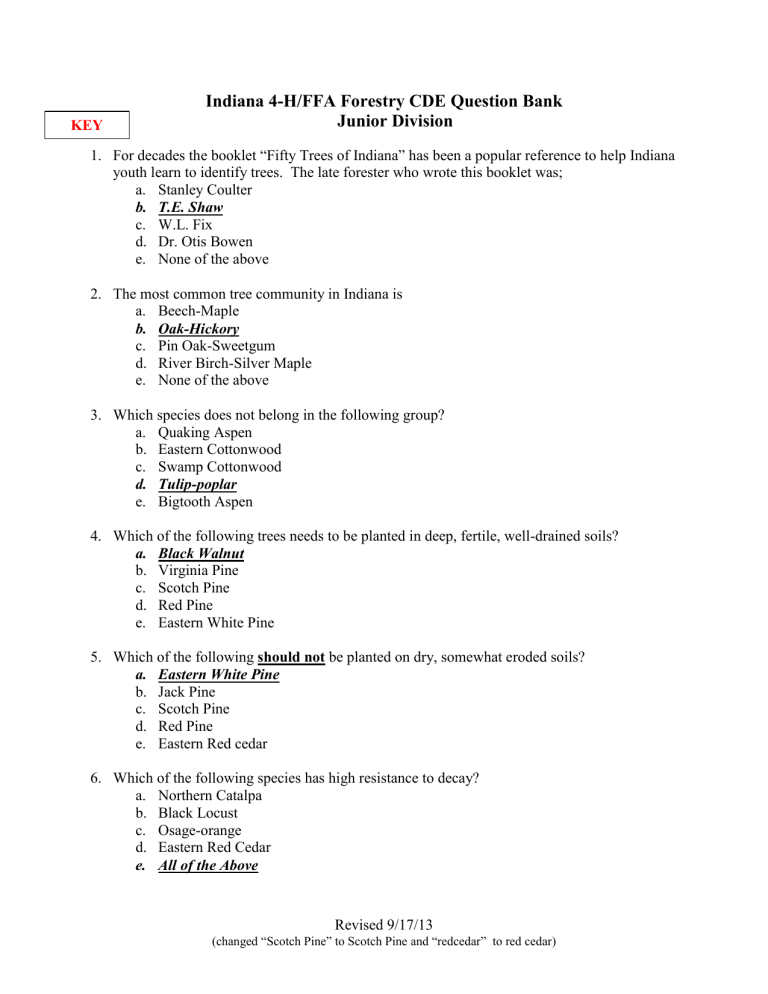
Indiana 4-H/FFA Forestry CDE Question Bank
KEY
Junior Division
1.
For decades the booklet “Fifty Trees of Indiana” has been a popular reference to help Indiana youth learn to identify trees. The late forester who wrote this booklet was; a.
Stanley Coulter b.
T.E. Shaw c.
W.L. Fix d.
Dr. Otis Bowen e.
None of the above
2.
The most common tree community in Indiana is a.
Beech-Maple b.
Oak-Hickory c.
Pin Oak-Sweetgum d.
River Birch-Silver Maple e.
None of the above
3.
Which species does not belong in the following group? a.
Quaking Aspen b.
Eastern Cottonwood c.
Swamp Cottonwood d.
Tulip-poplar e.
Bigtooth Aspen
4.
Which of the following trees needs to be planted in deep, fertile, well-drained soils? a.
Black Walnut b.
Virginia Pine c.
Scotch Pine d.
Red Pine e.
Eastern White Pine
5.
Which of the following should not be planted on dry, somewhat eroded soils? a.
Eastern White Pine b.
Jack Pine c.
Scotch Pine d.
Red Pine e.
Eastern Red cedar
6.
Which of the following species has high resistance to decay? a.
Northern Catalpa b.
Black Locust c.
Osage-orange d.
Eastern Red Cedar e.
All of the Above
Revised 9/17/13
(changed “Scotch Pine” to Scotch Pine and “redcedar” to red cedar)
7.
Which of the following species does not have a berry as a fruit? a.
Black Tupelo b.
Sweetgum c.
Black Cherry d.
Red Mulberry e.
Sassafras
8.
Which of the following is an evergreen with spineless cones that curve and twist into many irregular shapes and stay on the tree for many years? a.
White Pine b.
Scotch Pine c.
Jack Pine d.
Red Pine e.
None of the above
9.
The upper leaf surfaces of the Slippery Elm are smoother than those of the American Elm. a.
True b.
False
10.
The Eastern Cottonwood and Swamp Cottonwood both have flat leaf stems. a.
True b.
False
11.
Boxelder, Ohio Buckeye, and American Beech all have opposite compound leaves. a.
True b.
False
12.
Tree species with opposite, compound leaves include a.
Boxelder b.
Ohio Buckeye c.
White Ash d.
All of the Above e.
None of the above
13.
All of the Oaks have simple leaves, alternately arranged on twigs. a.
True b.
False
14.
Black Locust and Redbud fruits are bean-like pods which contain several a.
small seeds. b.
True c.
False
Revised 9/17/13
(changed “Scotch Pine” to Scotch Pine and “redcedar” to red cedar)
15.
Sycamore, a common species along Indiana streams, grows to the largest size of any Indiana tree. a.
True b.
False
16.
The acorns of the Chinquapin Oak are borne on long stalks a.
True b.
False
17.
The most common tree community in Indiana is the Oak-Hickory community. a.
True b.
False
18.
The tree also know as “Linn” is a.
Bitternut Hickory b.
American Basswood c.
Eastern Cottonwood d.
Sweetgum e.
None of the above
19.
The tree with the sulfur yellow bud is a.
Bitternut Hickory b.
Eastern Redbud c.
Black Walnut d.
Mockernut Hickory e.
None of the above
20.
Which of the following tree species have thorns? a.
Black Locust, Honeylocust, and Black Tupelo b.
Black Locust, Honeylocust, and Kentucky Coffeetree c.
Black Locust, Honeylocust, and Osage-orange d.
Black Locust, Kentucky Coffeetree, and Osage-orange e.
None of the above
21.
The tree with paired thorns is a.
Honeylocust b.
Osage-orange c.
Black Locust d.
Swamp Cottonwood e.
None of the above
22.
The tree known as :thorn-tree” is a.
Black Locust b.
Honeylocust c.
Osage-orange d.
Flowering Dogwood
Revised 9/17/13
(changed “Scotch Pine” to Scotch Pine and “redcedar” to red cedar)
23.
The tree with single thorns, ¾ inch in length, is a.
Honeylocust b.
Black Locust c.
Black Maple d.
Osage-orange e.
None of the above
24.
Black Maple is known as a hard maple. a.
True b.
False
25.
Which of the following Oaks is in the Red Oak group? a.
Chestnut Oak b.
Chinquapin c.
Black Oak d.
Swamp White Oak e.
None of the above
26.
The tree also know as “Pepperidge” is a.
Eastern Red cedar b.
Sassafras c.
Black Tupelo d.
Northern Catalpa e.
None of the above
27.
The tree with tan colored, honeycomb pith is a.
Butternut b.
Black Walnut c.
Black Cherry d.
Bitternut Hickory e.
None of the above
28.
The tree with chocolate colored, honeycomb pith is a.
Osage-orange b.
Bitternut Hickory c.
Butternut d.
Shagbark Hickory e.
None of the above
29.
Which Hickory has 5 to 7 leaflets and little buds? a.
Pignut Hickory b.
Mockernut Hickory c.
Shagbark Hickory d.
Bitternut Hickory e.
None of the above
Revised 9/17/13
(changed “Scotch Pine” to Scotch Pine and “redcedar” to red cedar)
30.
Which of the following is the White Oak group? a.
Pin Oak b.
Shingle Oak c.
Black Oak d.
Chestnut Oak e.
None of the above
31.
Which of the following has triangular shaped leaves? a.
Eastern Cottonwood b.
Quaking Aspen c.
Eastern Redbud d.
American Basswood e.
None of the above
32.
The tree with both scale-like and sharp-pointed leaves is a.
Eastern White Pine b.
Red Pine c.
Eastern Red cedar d.
Virginia Ping e.
Jack Pine
33.
Another name for White Hickory is a.
Shagbark Hickory b.
Pignut hickory c.
Bitternut Hickory d.
Mockernut Hickory e.
None of the above
34.
The only tree listed in Fifty Trees of Indiana with a palmate leaf arrangement is a.
Ohio Buckeye b.
Black Walnut c.
Boxelder d.
Kentucky Coffeetree e.
None of the above
35.
The tree with a spicy odor and taste is a.
Black Tupelo b.
Sweetgum c.
Sassafras d.
Virginia Pine e.
None of the above
Revised 9/17/13
(changed “Scotch Pine” to Scotch Pine and “redcedar” to red cedar)
36.
The only Pine with 5 needles per cluster is a.
Eastern White Pine b.
Virginia Pine c.
Jack Pine d.
Scotch Pine e.
None of the above
37.
The tree with the shaggy bark is a.
Eastern Redbud b.
American Elm c.
Slippery Elm d.
Shagbark Hickory e.
None of the above
38.
The soft Maples include a.
Sugar Maple b.
Silver Maple c.
Red Maple d.
Only B and C e.
All of the Above
39.
Which of the following has a spiny fruit ball? a.
Sycamore b.
Sweetgum c.
Black Tupelo d.
Black Maple e.
None of the abobe
40.
The Pine tree that grows on droughty sites in Southern Indiana is a.
Eastern White Pine b.
Jack Pine c.
Red Pine d.
Virginia Pine e.
None of the above
41.
The tree species best suited for planting in severely eroded places in Southern Indiana is a.
Black Walnut b.
Black Locust c.
Virginia Pine d.
Red Pine e.
Norway Spruce
Revised 9/17/13
(changed “Scotch Pine” to Scotch Pine and “redcedar” to red cedar)
42.
Indiana’s state tree is a.
Flowering Dogwood b.
Northern Catalpa c.
Tuliptree d.
Eastern Redbud e.
None of the above
43.
Which tree bears leaves alternately? a.
White Ash b.
Boxelder c.
Hickory d.
Sugar Maple e.
Dogwood
44.
Which of the following does not have winged seeds? a.
Boxelder b.
Beech c.
Basswood d.
White Ash e.
Sugar Maple
45.
Another name for the edges of leaves is a.
loves b.
clefts c.
margins d.
petioles e.
None of the above
46.
Triangular-shape leaves are characteristic of a.
Black Tupelo b.
Hackberry c.
Cottonwood d.
American Basswood e.
None of the above
47.
Winged seeds, joined in pairs, are characteristic of a.
White Ash b.
Boxelder c.
Sweetgum d.
Eastern Hophornbeam
48.
The Red Oak group includes a.
Bur Oak b.
Shingle Oak c.
Chestnut Oak d.
Chinquapin Oak
Revised 9/17/13
(changed “Scotch Pine” to Scotch Pine and “redcedar” to red cedar)
49.
The Kentucky Coffeetree has doubly compound leaves and thick twigs with a mottled color. a.
True b.
False
50.
The Butternut (White Walnut) can be distinguished from Black Walnut by having smaller number of leaflets, longer buds, chocolate colored pitch and oblong fruit a.
True b.
False
51.
The pith of Black Walnut is tan in color a.
True b.
False
52.
Black Locust and Eastern Redbud fruits are bean-like pods which contain several small seeds a.
True b.
False
53.
The fruit of the American Beech is a bur, ¾ inch long, covered with spines, and usually enclosing two triangular-shaped nuts a.
True b.
False
54.
Trees of the Red Oak group have rounded leaf margins, while those in the White Oak group have bristle-tipped leaves a.
True b.
False
55.
When comparing differences in the White Oak Group and the Red Oak Group, you will notice that the Red Oak group has a.
Bristle-tipped leaves b.
Acorns that mature in one year c.
Plugged pores in the wood d.
All of the Above
56.
All oaks of the White Oak group a.
Have bristle-tipped leaves b.
Mature their acorns in two years c.
Have plugged wood pores d.
Have opposite leaf arrangement
57.
The acorns of the Chinquapin Oak are borne on long stalks a.
True b.
False
Revised 9/17/13
(changed “Scotch Pine” to Scotch Pine and “redcedar” to red cedar)
58.
The lower leaf veins of the American Hornbeam are seldom forked a.
True b.
False
59.
The Kentucky Coffeetree is the most common tree in Indiana a.
True b.
False
60.
White Ash has opposite compound leaves. a.
True b.
False
61.
The leaves of Sweet gum are Five-pointed like a star. The fruit is a dark colored berry. a.
True b.
False
62.
Black Locust is doubly compound with long branched thorns. a.
True b.
False
63.
Shingle Oak are lobed leaves with an alternate arrangement. a.
True b.
False
64.
The American Hornbeam, Eastern Hop Hornbeam, and River Birch have thin smooth leaves with doubly-toothed leaf margins. a.
True b.
False
65.
The seeds of the Elms, Silver Maple, and Flowering Dogwood mature in the spring. a.
True b.
False
66.
The leaf veins of the Flowering Dogwood curve to the tip of the leaf. a.
True b.
False
67.
Eastern Hop hornbeam has shreddy bark and a fruit that resembles hops. a.
True b.
False
68.
The acorns of Northern Red Oak are set in a deep bowl-like cup, while Pin Oak acorns are set in shallow cups. a.
True b.
False
Revised 9/17/13
(changed “Scotch Pine” to Scotch Pine and “redcedar” to red cedar)
69.
Members of the Red Oak group mature their acorns in two years, while members of the
White Oak group mature their acorns in one year. a.
True b.
False
70.
Eastern Red cedar is the only evergreen tree that occurs naturally in Indiana. a.
True b.
False
71.
Two trees with leaves that are oval and have entire leaf margins are Common Persimmon and Flowering Dogwood. a.
True b.
False
72.
The Mockernut Hickory (White Hickory) has stout twigs, large buds, and shaggy bark. a.
True b.
False
73.
The Quaking Aspen can be distinguished from the Big tooth Aspen by its finely cut leaf margins and finer twigs. a.
True b.
False
74.
The new buds of Sycamores are formed under the cone-shaped base of the leaf stem. a.
True b.
False
75.
Which of the following has spiny cones? a.
Red Pine b.
Eastern White Pine c.
Scotch Pine d.
Jack Pine e.
Virginia Pine
76.
A pine which has dark green needles and has irregular growth is the _____ pine. a.
Jack b.
Scotch c.
Red d.
Virginia
77.
Which of the following trees often grows in wet or poorly drained conditions? a.
Pin Oak b.
Chestnut Oak c.
White Hickory d.
Pignut Hickory
Revised 9/17/13
(changed “Scotch Pine” to Scotch Pine and “redcedar” to red cedar)
78.
The following has opposite leaves a.
Red Mulberry b.
Common Persimmon c.
Boxelder d.
Sassafras e.
A and B
79.
Which species does not belong in the following group? a.
Quaking Aspen b.
Eastern Cottonwood c.
Swamp Cottonwood d.
Tuliptree e.
Bigtooth Aspen
80.
Shagbark Hickory usually has 5 leaflets a.
True b.
False
81.
Eastern Cottonwood and Quaking Aspen leaf stem are long compared to the leaf stems of
River Birch. a.
True b.
False
82.
Which species does not have an opposite leaf arrangement? a.
Flowering Dogwood b.
Boxelder c.
Shingle Oak d.
Ohio Buckeye e.
White Ash
83.
Which of the following has doubly compound leaves? a.
Honey locust b.
Kentucky Coffee tree c.
White Ash d.
Black Locust e.
A and B
84.
Mockernut Hickory is also known as White Hickory. a.
True b.
False
85.
Pignut Hickory is also known as Black Hickory. a.
True b.
False
Revised 9/17/13
(changed “Scotch Pine” to Scotch Pine and “redcedar” to red cedar)
86.
Soft maples produce seeds in the fall and hard maples produce seeds in the spring. a.
True b.
False
87.
Sycamore leaves have leafy clasps at the base of their leaf stems. a.
True b.
False
88.
Black tupelo fruits look like spiny balls. a.
True b.
False
89.
Bur Oaks have acorns with a hairy fringe on top. a.
True b.
False
90.
The most common tree community in Indiana is the Tuliptree-Sugar Maple community. a.
True b.
False
91.
Which is a tree that can have leaf stems 5 inches long? a.
White Oak b.
Sweetgum c.
American Elm d.
Osage-Orange
92.
Leaf clasps are found on tree species such as a.
Tuliptree b.
Red Maple c.
Flowering Dogwood
93.
A tree species which often has small distorted twigs called “witches’ brooms” is a.
American Basswood b.
Red Mulberry c.
Northern Catalpa d.
Hackberry
94.
Which is a tree with very rough leaves and gray twigs? a.
Slippery Elm b.
American Elm c.
Eastern Redbug d.
Common Persimmon
Revised 9/17/13
(changed “Scotch Pine” to Scotch Pine and “redcedar” to red cedar)
95.
Which tree has “scaly” orange bark on young trees? a.
Virginia Pine b.
Red Pine c.
Scotch Pine d.
Jack Pine
96.
Which tree is also called the “hedge” tree? a.
Honeylocust b.
Slippery Elm c.
Black Locust d.
Osage-orange
97.
Which tree has fruit which is a small blue berry? a.
Sassafras b.
Eastern Red cedar c.
Eastern Redbud d.
Slippery Elm
98.
Black Walnut leaves are compound. a.
True b.
False
99.
Honeylocust is the only tree with doubly compound leaves found in Indiana. a.
True b.
False
100.
Which of the following is not commonly used for pulpwood? a.
Black Walnut b.
Tuliptree c.
Sycamore d.
Bigtooth Aspen e.
Black Tupelo
101.
Which of the following trees have two needles per cluster? a.
Eastern White Pine b.
Red Pine c.
Scotch Pine d.
B and C e.
A and C
102.
Which of these trees does not have two needles? a.
White Pine b.
Jack Pine c.
Red Pine d.
Scotch Pine
Revised 9/17/13
(changed “Scotch Pine” to Scotch Pine and “redcedar” to red cedar)
103.
Ohio Buckeye has compound leaves with five leaflets. a.
true b.
false
104.
For most tree species, leaf attachment is either alternate or compound. a.
true b.
false
105.
A single leaf stem is either doubly-compound, compound, or a.
alternate b.
opposite c.
whorled d.
simple
106.
Trees that prefer similar growing conditions form a.
forest stands b.
forest land c.
state forests d.
forest communities
107.
An association of trees that grows together in bottomlands and poorly drained soils is a.
Beech-Maple b.
Pin Oak-Sweetgum c.
Oak-Hickory d.
Mixed
108.
The Blue Beech(American Hornbeam) has shreddy bark and fruit like a hopvine. a.
true b.
false
109.
Which of these oak leaves do not have bristle tips? a.
Black Oak b.
Pin Oak c.
Red Oak d.
Bur Oak
110.
Leaf clasps are small leaf like growths that grasp the twig at the base of the leaf stem. a.
true b.
false
111.
Which of the following trees have leaf clasps? a.
Sycamore b.
Tuliptree c.
Black Willow d.
Black Maple e.
all of these
Revised 9/17/13
(changed “Scotch Pine” to Scotch Pine and “redcedar” to red cedar)
112.
Which is not a leaf margin? a.
toothed b.
lobed c.
smooth d.
winged
113.
A leaf margin could be a.
simple b.
entire c.
opposite d.
falcate
114.
A complete leaf has a bud at the base of the leaf stem on the woody twig. a.
true b.
false
115.
Boxelder leaves are arranged opposite to one another. a.
true b.
false
116.
Both Black Oak and Northern Red Oak have bristle-tipped leaves. a.
true b.
false
117.
Sugar Maple leaves have rounded leaf crotches. a.
true b.
false
118.
Which is not of the red oak family? a.
Black Oak b.
Pin Oak c.
Bur Oak d.
Shingle Oak e.
None of the above
119.
The following has/have toothed margins. a.
Red Mulberry b.
American Elm c.
Black Gum d.
Sassafras e.
A and B
Revised 9/17/13
(changed “Scotch Pine” to Scotch Pine and “redcedar” to red cedar)
120.
Slippery Elm has very rough leaves and gray twigs, and American Elm has slightly rough leaves and brown twigs. a.
true b.
false
121.
Sweetgum is often found growing with Pin Oak in the low, wet woods of Southern
Indiana. a.
true b.
false
122.
The following has/have doubly compound leaves a.
Red Mulberry b.
Kentucky Coffetree c.
Black Walnut d.
B and C e.
A and B
123.
Bristle-tipped leaves are found on a.
Pin Oak b.
Black Oak c.
Red Oak d.
Shingle Oak e.
All of the above
124.
Trees with distinctly variable leaf shapes include a.
Sassafras b.
Red Mulberry c.
Boxelder d.
A and B e.
All of the above
125.
Palmately compound leaves are found on a.
Shagbark Hickory b.
Ohio Buckeye c.
Butternut d.
Boxelder e.
White Ash
126.
Alternate leaf arrangement is a characteristic of a.
maples b.
ashes c.
dogwoods d.
oaks e.
pines
Revised 9/17/13
(changed “Scotch Pine” to Scotch Pine and “redcedar” to red cedar)
127.
Which of the following needles are four to six inches long? a.
White Pine b.
Red Pine c.
Scotch Pine d.
Jack Pine e.
Virginia Pine
128.
Which tree species does not belong in the following group based on leaf arrangement? a.
Silver Maple b.
Black Willow c.
Black Walnut d.
Butternut e.
Black Oak
129.
Sassafras can be identified by a.
deeply furrowed bark b.
spicy taste of twig c.
zigzag twig d.
plum-like fruit
130.
In winter trees are identified by a.
size b.
bark c.
leaf d.
color e.
None of the above
131.
Trees can be identified in winter by a.
bark characteristics b.
fruit c.
buds d.
All of the above
132.
Leaf clasps occur on a.
Green Ash b.
Red Maple c.
Cottonwood d.
Sycamore
133.
Which of these trees have opposite compound leaves? a.
Black Locust b.
Kentucky Coffeetree c.
Ohio Buckeye d.
Honeylocust
Revised 9/17/13
(changed “Scotch Pine” to Scotch Pine and “redcedar” to red cedar)
134.
A zigzag twig describes a.
Cottonwood b.
Black Walnut c.
Basswood d.
Sweetgum
135.
“First tree to leaf out in the spring, and the first to lose its leaves” describes a.
Boxeleder b.
Ohio Buckeye c.
Black Cherry d.
Black Tupelo e.
None of the above
136.
The Sweetgum fruit is a a.
spiny ball b.
soft ball c.
rough skinned ball d.
flat, long pod e.
None of the above
137.
The sugar maple seed ripens a.
in the spring b.
after a frost c.
in the fall d.
every other year e.
None of the above
138.
Bur Oak fruit is a.
an inch long large acorn, set in a flat, shallow cup b.
an acorn born on a long stalk c.
a large acorn set deep in a cup with a hairy fringe on top d.
an acorn set in thin, cone-shaped cups, borne on a short stalk e.
None of the above
139.
The fruit of this tree often hangs on until midwinter. a.
Sycamore b.
Persimmon c.
Tuliptree d.
Osage-orange
140.
The buds of this tree are sulfur-yellow in color. a.
Pecan Hickory b.
Bitternut Hickory c.
Pignut Hickory d.
White Hickory
Revised 9/17/13
(changed “Scotch Pine” to Scotch Pine and “redcedar” to red cedar)
141.
Warty bark and witches’ broom are characteristics of a.
American Beech b.
American Elm c.
Sweetgum d.
Hackberry
142.
American Elm bark a.
has alternate colored layers b.
resembles alligator hide c.
is tight and gray in color d.
is mottled in color
143.
The limbs tend to grow at right angles to the trunk. a.
Honeylocust b.
Pin Oak c.
Black Tupelo d.
Boxelder e.
None of the above
144.
Which of the following does not have compound leaves? a.
Red Mulberry b.
Kentucky Coffeetree c.
Black Walnut d.
Green Ash e.
None of the above
145.
Large, three-lobed leaves, with top lobe widely notched, describes a.
Black Walnut b.
Tuliptree c.
Sassafras d.
Sycamore e.
None of the above
146.
Compound leaves, alternately arranged on the twig, solid pith, not honey-combed describes a.
Maples b.
Oaks c.
Hickories d.
Elms
147.
Which species of fruit does not belong in the following group? a.
Common Persimmon b.
Eastern Redbud c.
Honeylocust d.
Kentucky Coffeetree
Revised 9/17/13
(changed “Scotch Pine” to Scotch Pine and “redcedar” to red cedar)
148.
Based on leaf arrangement, which species does not belong with the others? a.
Silver Maple b.
Black Willow c.
Black Walnut d.
Black Oak
149.
Based on fruit type, which of the following trees does not belong with the others? a.
Black Locust b.
Kentucky Coffeetree c.
Eastern Redbud d.
Black Cherry
150.
Based on seed dispersal mechanism, which species does not belong in the following group? a.
Persimmon b.
Red Maple c.
White Ash d.
Boxelder
151.
Cottonwood leaves have a ___________ shape. a.
tomentose b.
rachis c.
petiole d.
deltoid
152.
Which of the following trees has a winged seed called samara? a.
Black locust b.
White ash c.
Ironwood d.
River birch e.
None of the above
153.
This tree’s twig bears corky wings. The tree grows straight and tall, and can be found in low, wet woods of southern Indiana. It is a.
Swamp white oak b.
Sweetgum c.
Bur Oak d.
Hackberry
154.
The following oak tree has bristle-tipped leaves a.
Black O ak b.
Swamp White c.
Bur d.
all of these
Revised 9/17/13
(changed “Scotch Pine” to Scotch Pine and “redcedar” to red cedar)
155.
Which of the following does not have compound leaves? a.
Sycamore b.
Mockernut hickory c.
Black walnut d.
Boxelder
156.
Elm have which type of fruit? a.
samara b.
wafer-like c.
pod d.
berry
157.
The darker colored wood near the center of a tree is called a.
heartwood b.
cambium c.
springwood d.
sapwood e.
none of the above
158.
Tree parts used for food storage are a.
wood rays b.
parenchyma cells c.
heartwood lines d.
cambium segments e.
None of the above
159.
Dead, inner wood near the tree center is a.
sapwood b.
summerwood c.
springwood d.
heartwood e.
None of the above
160.
The outer living portion of the stem is a.
sapwood b.
summerwood c.
springwood d.
heartwood
161.
Ribbon like lines running across the annual rings are called a.
wood rays b.
parenchyma cells c.
heartwood lines d.
cambium segments
Revised 9/17/13
(changed “Scotch Pine” to Scotch Pine and “redcedar” to red cedar)
162.
Forest fires damage and destroy small trees, but do not damage large trees. a.
true b.
false
163.
Nine out of ten forest fires in Indiana are caused by human carelessness. a.
true b.
false
164.
The geographical unit with the greatest percentage of trees in Indiana is the a.
Northern Unit b.
Lower Wabash Unit c.
Knobs Unit d.
Upland Flats Unit e.
None of the above
165.
Feeder roots can be harmed by grazing livestock. a.
true b.
false
166.
The cambium is a thin, green layer just inside the inner bark. a.
true b.
false
167.
Growth in diameter is a result of a.
new rings of growing wood from the center of the stem b.
new rings of growing wood developed form both sides of the cambium c.
new rings of growing wood developed from the sapwood d.
new rings of the growing wood developed form the inside of the bark e.
None of the above
168.
Livestock should be left to roam the forests to fertilize the soils. a.
true b.
false
169.
Bark is considered the “armor” of a tree. a.
true b.
false
170.
Cambium is a.
the “armor” which protects the tree from insects and disease b.
the thin, green layer just inside the inner bark c.
the inner most layer of wood d.
the layer between the heartwood and the sapwood e.
None of the above
Revised 9/17/13
(changed “Scotch Pine” to Scotch Pine and “redcedar” to red cedar)
171.
Some important uses of Indiana forests are a.
wood products b.
conservation of soil and water c.
recreation, beauty, and comfort d.
all of the above e.
None of the above
172.
Livestock grazing in woodlots is not a significant problem in Indiana. a.
true b.
false
173.
The tree part that captures energy from the sun is a.
cambium b.
photosynthesis c.
leaves d.
xylem e.
heterphagous sclera
174.
Photosynthesis is the process in the leaf cells that uses light, carbon dioxide and water to produce simple sugars. a.
true b.
false
175.
Preservation means use of non-renewable minerals and harvesting a.
true b.
false
176.
The __________ roots in the upper two feet of soil feed the tree. a.
anchor b.
fine hair-like c.
supporting d.
cambium e.
None of the above
177.
Quail use ________ for travel lanes a.
forest interior b.
forest edge c.
pasture adjacent to forest d.
riparian zones
178.
Bark wounds caused by fire, wind, poor pruning, and logging injury can be prevented by a.
better equipment b.
proper tree selection c.
good forest management d.
growing certified trees
Revised 9/17/13
(changed “Scotch Pine” to Scotch Pine and “redcedar” to red cedar)
179.
In a cross section of tree trunk, the correct sequence of tissues going from the inside of a tree to the outside are a.
sapwood, heartwood, cambium, bark b.
heartwood, sapwood, bark, cambium c.
pith, heartwood, sapwood, cambium d.
bark, cambium, sapwood, heartwood e.
None of the above
180.
Which of the following tree species has its seed spread differently from the others? a.
Common Persimmon b.
Flowering Dogwood c.
Black Cherry d.
Black Walnut e.
Eastern Cottonwood
181.
Which of the following is an insect which damages tree stems directly? a.
anthracnose b.
tent caterpillars c.
Verticillium Wilt d.
Diplodia Tip Blight e.
carpenter worms
182.
A tree that does not have both male and female flowers on the same tree is a.
Shagbark Hickory b.
White Oak c.
Eastern Cottonwood d.
Black Walnut e.
all of the above
183.
Black Walnut is considered the most valuable wood in Indiana, but more mills in Indiana use Red and Black Oaks a.
true b.
false
184.
Outbreaks of insect damage are more common in mixed species stands than pure stands of one tree species. a.
true b.
false
185.
Imperfect flowers with only female parts are called staminate flowers. a.
true b.
false
Revised 9/17/13
(changed “Scotch Pine” to Scotch Pine and “redcedar” to red cedar)
186.
Tuliptree and Boxelder seeds are scattered mostly by the wind. a.
true b.
false
187.
Perfect flowers have both male and female parts. a.
true b.
false
188.
Black Locust trees are often used as fence posts. a.
true b.
false
189.
Both Sugar Maple and Red Maple seeds ripen in late summer. a.
true b.
false
190.
Noninfectious diseases may result from a.
Sudden change in air pollution b.
Sudden change in air temperature c.
Sudden change in soil and water relationship d.
Mechanical injuries e.
All of the above
191.
Black Walnut is the wood most often used in Indiana sawmills a.
true b.
false
192.
The tree used in basketry is a.
Black Willow b.
Black Maple c.
Black Locust d.
Black Cherry
193.
The tree used to make baseball bats and hockey sticks is a.
White Ash b.
Black Walnut c.
Black Cherry d.
Shagbark Hickory e.
None of the above
194.
The seed of the Slippery Elm, White Ash, and Tuliptree mature in the fall. a.
true b.
false
Revised 9/17/13
(changed “Scotch Pine” to Scotch Pine and “redcedar” to red cedar)
195.
The seed of the Red Maple matures in the spring. a.
true b.
false
196.
Which of the following insects damage tree roots directly? a.
pine weevils b.
tent caterpillars c.
bagworms d.
white grubs (June beetle larvae) e.
linden loopers
197.
Black Tupelo seeds are distributed by birds and other animals a.
true b.
false
198.
Seed of the Tuliptree is primarily scattered by birds. a.
true b.
false
199.
Forest insect pests can be controlled by a.
chemical insecticides b.
insect parasites c.
insect diseases d.
mechanical controls e.
All of the above
200.
Infectious leaf disease a.
seldom cause tree death b.
may be caused by fungi c.
may be caused by bacteria d.
may be viral e.
All of the above
201.
Infectious diseases are caused by a.
water pollution b.
air pollution c.
fungal bodies d.
mechanical injury
202.
Which of the following trees have perfect flowers? a.
Black Locust b.
Black Walnut c.
Black Willow d.
Black Tupelo e.
All of the above
Revised 9/17/13
(changed “Scotch Pine” to Scotch Pine and “redcedar” to red cedar)
203.
Seeds that ripen in the spring include: a.
American Elm b.
Hackberry c.
White Ash d.
Shagbark Hickory e.
All of the above
204.
Seeds scattered by birds include a.
Hackberry b.
Black Cherry c.
Red Mulberry d.
Eastern Red cedar e.
All of the above
205.
A disease common to Sycamores is: a.
verticillium wilt b.
diplodia tip blight c.
white trunk rot d.
anthracnose e.
All of the above
206.
Carpenter worms attack: a.
Red Oaks b.
White Oaks c.
Soft Maples d.
Hard Maples e.
None of the above
207.
Air pollution is considered a Noninfectious disease a.
true b.
false
208.
Imperfect flowers with only male parts are called pistilate flowers: a.
true b.
false
209.
Nearly all species of hardwoods are commonly used to make pulpwood except : a.
Black Walnut, Black Locust, and Black Cherry b.
Black Walnut, Black Cherry, and Black Oak c.
Black Walnut, Black Locust, and Honeylocust d.
Black Walnut, Black Locust, and Osage-orange e.
None of the above
Revised 9/17/13
(changed “Scotch Pine” to Scotch Pine and “redcedar” to red cedar)
210.
Which of the following is not an example of a primary wood-using industry? a.
Lumber b.
Veneer c.
Cabinet-making d.
Cooperage e.
Paper
211.
Which of the following is not used commonly for pulpwood? a.
Black Walnut b.
Tuliptree c.
Sycamore d.
Bigtooth Aspen e.
Black Tupelo
212.
Secondary wood-using industries are those that purchase ________ to use in manufacturing: a.
Lumber b.
Logs c.
Both A and B d.
None of the above
213.
Which trees are considered to be good sources for making fence posts? a.
Red Mulberry, Sassafras b.
Black Oak, Common Persimmon c.
Osage-orange, Northern Catalpa d.
both A and C e.
None of the above
214.
Which of the following trees is not used for fence posts? a.
Osage-orange b.
Northern Catalpa c.
Eastern Red cedar d.
Persimmon e.
None of the above
215.
The characteristics or properties of a tree determine: a.
Shock resistance b.
End product c.
Mill ratio d.
Timber harvest e.
None of the above
216.
Powder post beetles prefer infesting pine, but will also attack hardwood in some cases. a.
true b.
false
Revised 9/17/13
(changed “Scotch Pine” to Scotch Pine and “redcedar” to red cedar)
217.
A stand of trees will be more vulnerable to insect attack outbreaks if it is a.
over mature b.
weakened by wind c.
weakened by drought d.
both A and C e.
all of the above
218.
Tree species which have seeds that ripen in the fall include: a.
Sycamore, Eastern Hophornbeam, American Hornbeam, and Sassafras b.
Sassafras, Eastern Red cedar, Black Tupelo, and Flowering Dogwood c.
River Birch, Black Walnut, Common Persimmon, and American Beech d.
Eastern Hophornbeam, Black Cherry, Sugar Maple, and Black Locust e.
None of the above
219.
Insect outbreaks often occur in a.
pure stands of one tree species b.
young, vigorous stands c.
stands weakened by drought d.
A and C e.
None of the above
220.
Insect outbreaks often occur in a.
pure stands of one tree species b.
young vigorous stands c.
sturdy, strong trees d.
fire resistant trees e.
None of the above
221.
Willow wood is heavy, hard and strong with a high shock resistance and is typically used for flooring. a.
True b.
False
222.
Ash and maple seeds are distributed mainly by water. a.
True b.
False
223.
The seeds of elm, soft maples, willows and cottonwood ripen mostly in August. a.
True b.
False
224.
Insect outbreaks often occur in a.
pure stands of one tree species b.
young vigorous stands c.
stands weakened by drought d.
A and C
Revised 9/17/13
(changed “Scotch Pine” to Scotch Pine and “redcedar” to red cedar)
225.
When planting seedlings, the depth of the planting hole is not an important issue to consider. a.
True b.
False
226.
Trees with imperfect flowers have a.
one type flower-male or female b.
both male and female flowers c.
male flowers on the upper branches d.
female flowers on the upper branches e.
None of the above
227.
The fruit grows from the female flower. a.
True b.
False
228.
The majority of tree seeds mature in _____ months. a.
1-2 b.
3-5 c.
6-8 d.
9-12 e.
None of the above
229.
Failure of seeds to sprout may be due to a.
cool, moist soil b.
dry, hard soil c.
leaf litter d.
high winds e.
None of the above
230.
Primary wood products industries in Indiana. a.
make plywood and paneling b.
produce boats and trailers c.
make baseball bats d.
purchase logs
231.
Many of our most serious insect problems have been caused by an insect species brought into the United States from foreign countries. a.
True b.
False
232.
Tuliptrees and hard maples are the top ranked hardwood species used by Indiana sawmills. a.
True b.
False
Revised 9/17/13
(changed “Scotch Pine” to Scotch Pine and “redcedar” to red cedar)
233.
Tree flowers that get pollinated never developed seeds. a.
True b.
False
234.
Which tree has perfect flowers? a.
Black Locust b.
Walnut c.
Basswood d.
A and C
235.
The Tuliptree has perfect flowers (both male and female parts). a.
True b.
False
236.
Female flowers are also called pistilate flowers. a.
True b.
False
237.
Red Cedar seeds are scattered mostly by water. a.
True b.
False
238.
Red and Black oaks are the top ranked hardwood species used by Indiana sawmills. a.
True b.
False
239.
American Basswood is better than White Ash for making baseball bats. a.
True b.
False
240.
The top three hardwood species used in Indiana sawmills are Red Oak, Black Oaks, and
Black Cherry. a.
True b.
False
241.
Hickory is used as fuel for meat smoking. a.
True b.
False
242.
Which of the following has winged seeds? a.
Honeylocust b.
Ohio Buckeye c.
Tuliptree d.
Black Oak e.
Kentucky Coffeetree
Revised 9/17/13
(changed “Scotch Pine” to Scotch Pine and “redcedar” to red cedar)
243.
Which oak is not used for cooperage? a.
Red Oak b.
White Oak
244.
Which of the following trees has a different fruit type from the others? a.
Black Locust b.
Kentucky Coffeetree c.
Eastern Redbud d.
Honeylocust e.
Black Cherry
Revised 9/17/13
(changed “Scotch Pine” to Scotch Pine and “redcedar” to red cedar)
